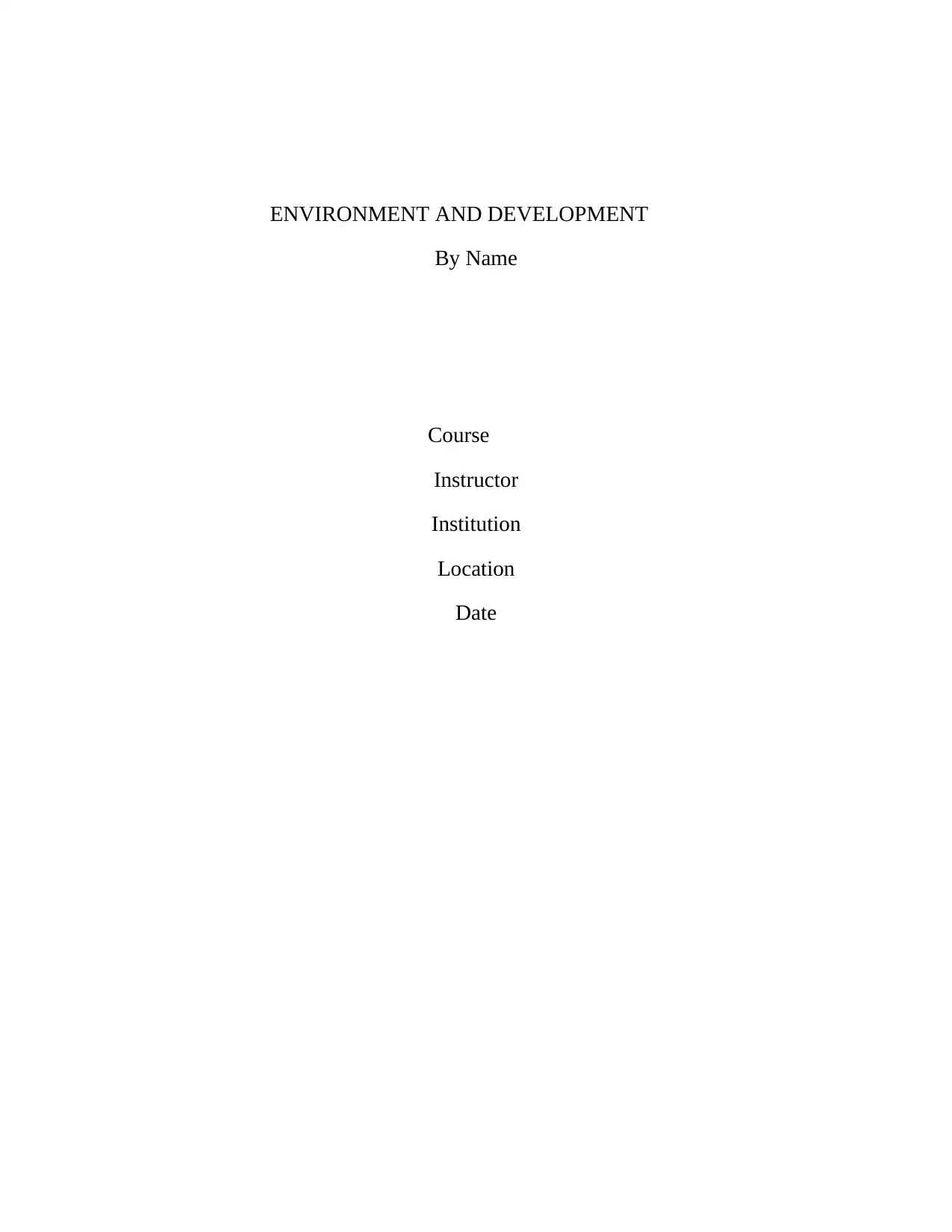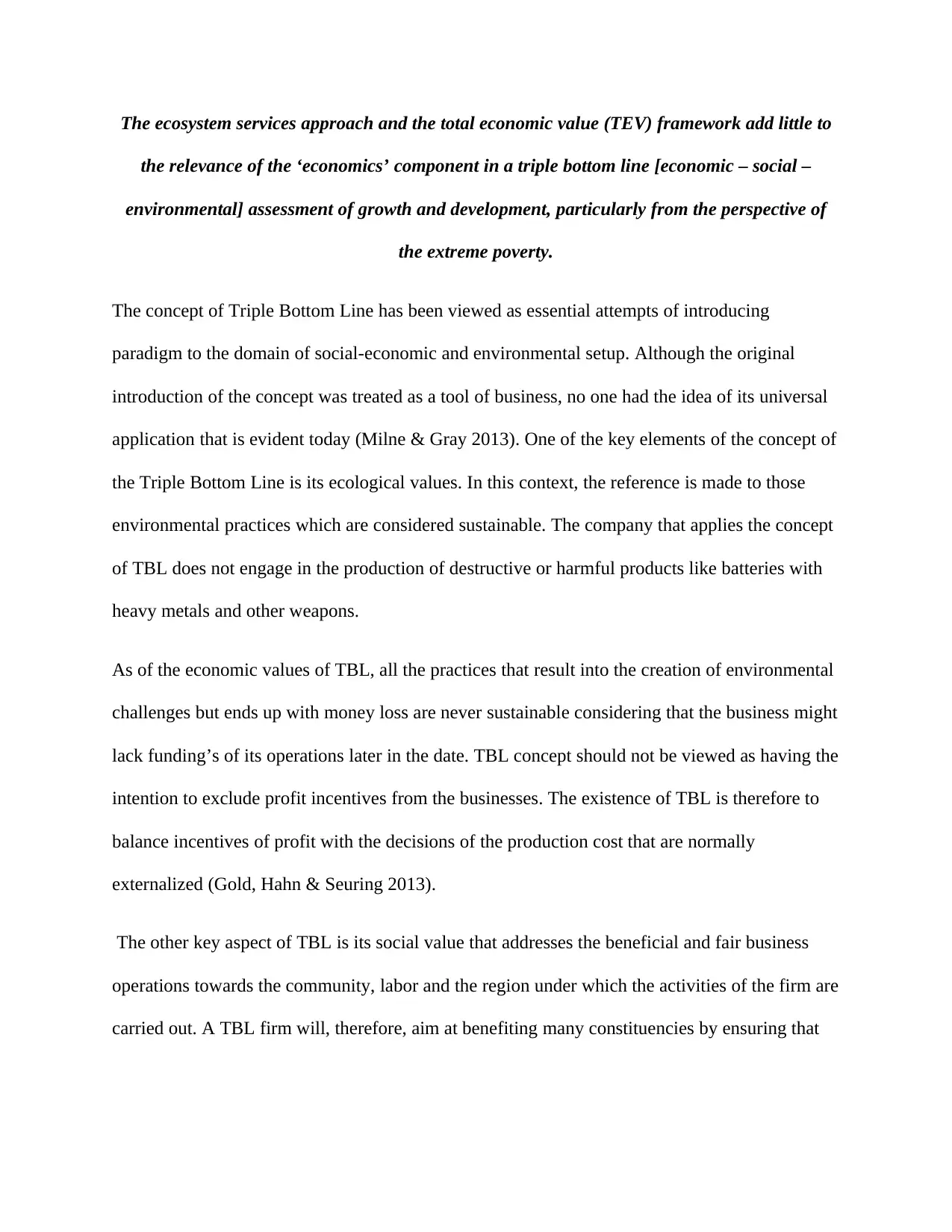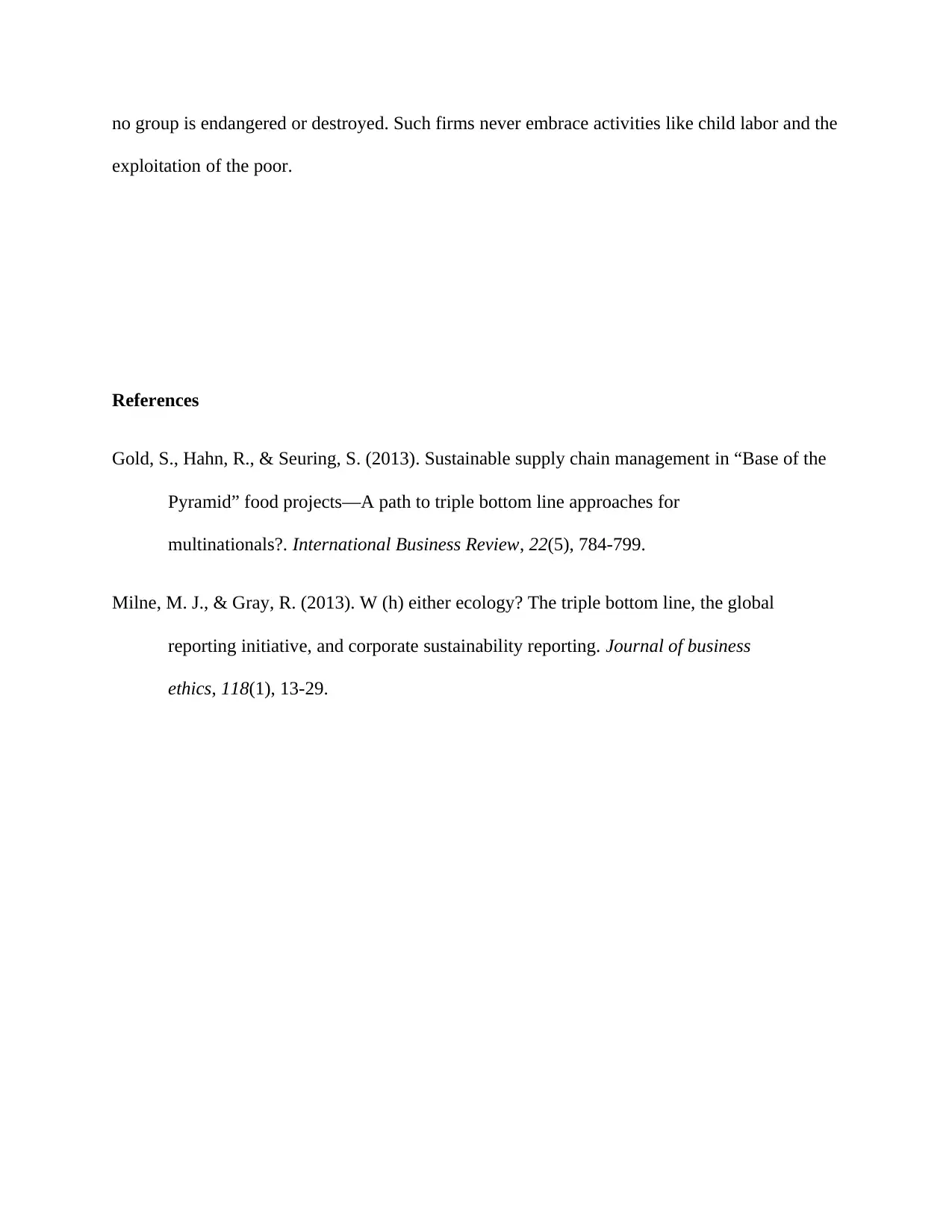Environment and Development Report: Economic Concepts and Mechanisms
VerifiedAdded on 2023/01/16
|3
|449
|52
Report
AI Summary
This report examines the intersection of environment and development through an economic lens, focusing on the relevance of the Triple Bottom Line (TBL) framework and the ecosystem services approach. It critiques the TBL's applicability, particularly in addressing extreme poverty, and explores its economic, social, and environmental values. The report highlights the importance of sustainable practices, balancing profit incentives with environmental and social considerations. Furthermore, it addresses economic mechanisms for regulating environmental quality, including carbon markets and the Clean Development Mechanism, while also considering the economic impacts of climate change as outlined in the Stern Review. The report provides an overview of economic concepts related to environmental goods, services, and resources, and the challenges confronting international agreements on greenhouse gas reductions. The analysis extends to the concept of 'pro-poor' development and links it to carbon markets.
1 out of 3










![[object Object]](/_next/static/media/star-bottom.7253800d.svg)